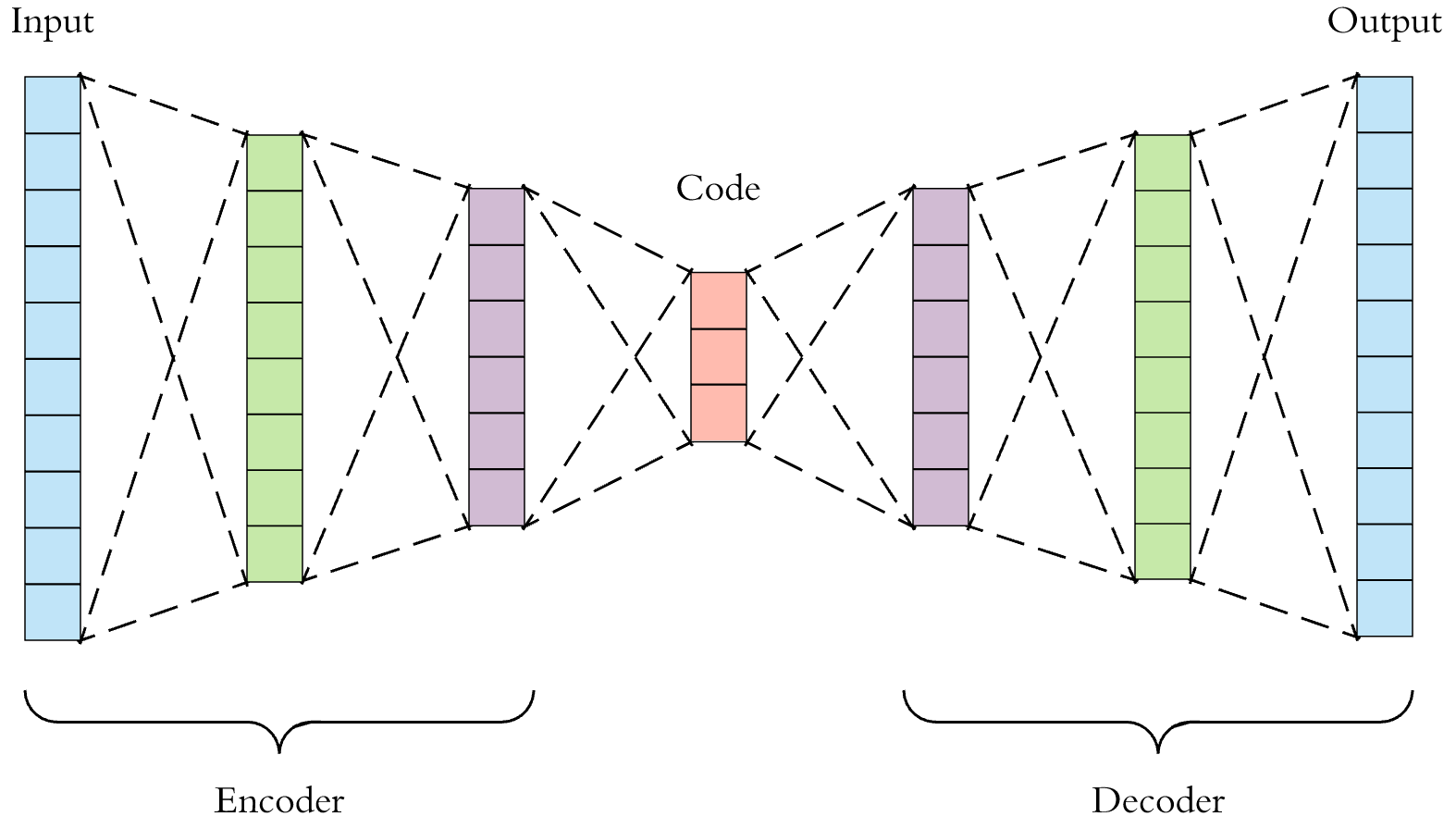Sunday, 20 October 2019
Saturday, 19 October 2019
Autoencoders
1. Introduction
Autoencoders
are a specific type of feedforward neural networks where the input is
the same as the output. They compress the input into a lower-dimensional
code and then reconstruct the output from this
representation. The code is a compact “summary” or “compression” of the
input, also called the latent-space representation.
An
autoencoder consists of 3 components:
- Encoder
- Code
- Decoder.

To build an autoencoder we need 3 things: an encoding method, decoding
method, and a loss function to compare the output with the target.
Autoencoders are mainly a dimensionality reduction (or compression) algorithm with a couple of important properties:
- Data-specific: Autoencoders are only able to meaningfully compress data similar to what they have been trained on. Since they learn features specific for the given training data, they are different than a standard data compression algorithm like gzip. So we can’t expect an autoencoder trained on handwritten digits to compress landscape photos.
- Lossy: The output of the autoencoder will not be exactly the same as the input, it will be a close but degraded representation. If you want lossless compression they are not the way to go.
- Unsupervised: To train an autoencoder we don’t need to do anything fancy, just throw the raw input data at it. Autoencoders are considered an unsupervised learning technique since they don’t need explicit labels to train on. But to be more precise they are self-supervised because they generate their own labels from the training data
2. Architecture
Both the encoder
and decoder are fully-connected feedforward neural networks.
Code is a single layer of an ANN with the dimensionality of our choice.
The number of nodes in the code layer (code size) is a hyperparameter that we set before training the autoencoder.

This
is a more detailed visualization of an autoencoder.
- First the input passes through the encoder, which is a fully-connected ANN, to produce the code.
- The decoder, which has the similar ANN structure, then produces the output only using the code.
- The goal is to get an output identical with the input.
- Note that the decoder architecture is the mirror image of the encoder. This is not a requirement but it’s typically the case. The only requirement is the dimensionality of the input and output needs to be the same. Anything in the middle can be played with.
There are 4 hyperparameters that we need to set before training an autoencoder:
- Code size: number of nodes in the middle layer. Smaller size results in more compression.
- Number of layers: the autoencoder can be as deep as we like. In the figure above we have 2 layers in both the encoder and decoder, without considering the input and output.
- Number of nodes per layer: the autoencoder architecture we’re working on is called a stacked autoencoder since the layers are stacked one after another. Usually stacked autoencoders look like a “sandwitch”. The number of nodes per layer decreases with each subsequent layer of the encoder, and increases back in the decoder. Also the decoder is symmetric to the encoder in terms of layer structure. As noted above this is not necessary and we have total control over these parameters.
- Loss function: we either use mean squared error (mse) or binary crossentropy. If the input values are in the range [0, 1] then we typically use crossentropy, otherwise we use the mean squared error.
Autoencoders are trained the same way as ANNs via backpropagation.
Why do we need Deep Learning?
- In the present scenarios, most of the problems in artificial intelligence like Image Segmentation, Image Classification and many more are solving using Deep Leaning models. So the question is if we have many machine learning algorithms and what is Deep Learning and Why do we need it?
 |
| Source:Edureka |
- By the following picture we can see that there are some limitations of Machine Learning.
- The major distinguishing factor of deep learning compared to more traditional methods is the ability of the performance of the classifiers to large scaled with increased in quantities of data.
 |
| Source: becominghuman.ai |
- Older machine learning algorithms typically plateau in performance after it reaches a threshold of training data. Deep learning is one-of-a-kind algorithm whose performance continues to improve as more the data fed, the more the classifier is trained on resulting in outperforming more than the traditional models/ algorithm.
- The execution time is comparatively more for deep learning , as it needed to be trained with lots of data. The major drawback of this ability to scale with additional training data is a need for trusted data that can be used to train the model.
- Machine Learning Vs Deep Learning
So, what happens in Deep Learning?
The
software learns, in a very realistic sense, to recognize patterns in
digital representations of images, sounds, censor data and other data.
We are pre-training data, in order to classify or predict and build a
train/training set and test set(we know the result). And on prediction
obtaining a optimal point such that our prediction gives a satisfying
result.
Subscribe to:
Posts (Atom)










